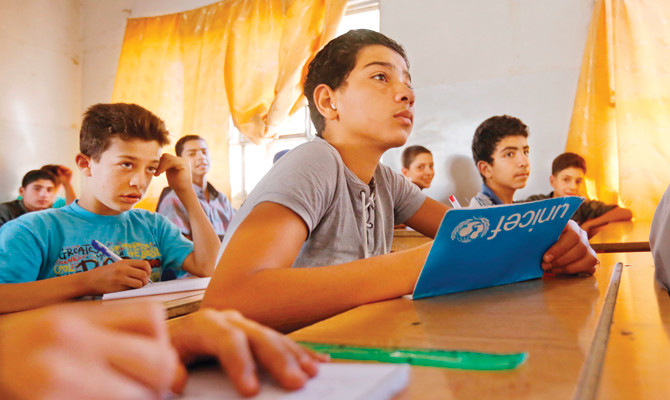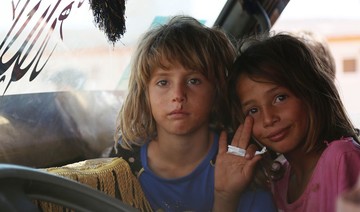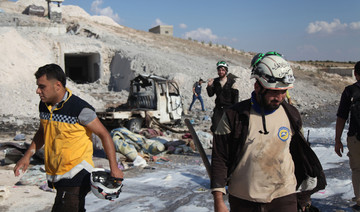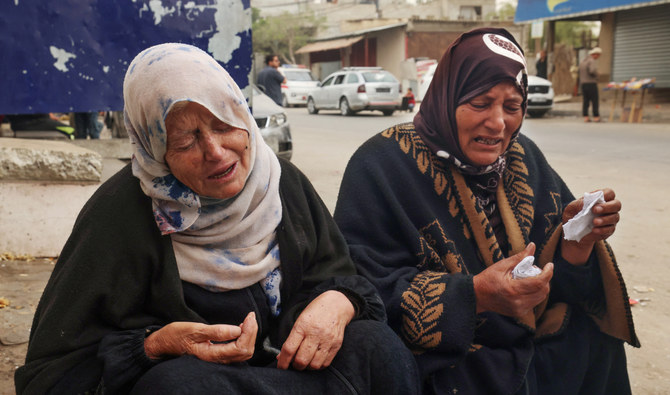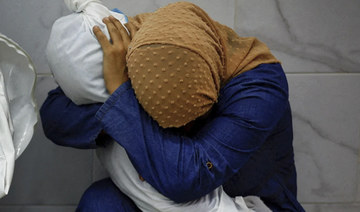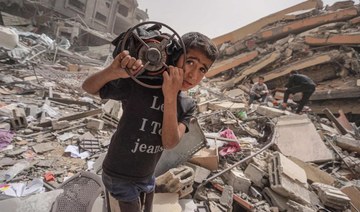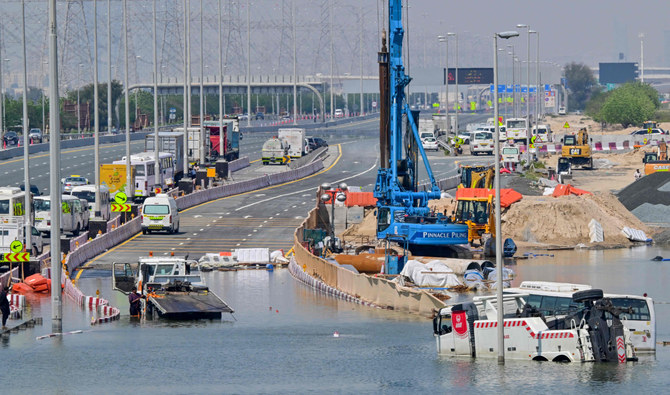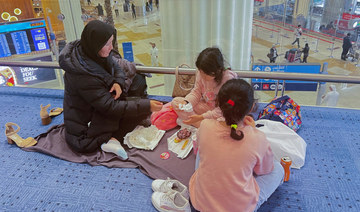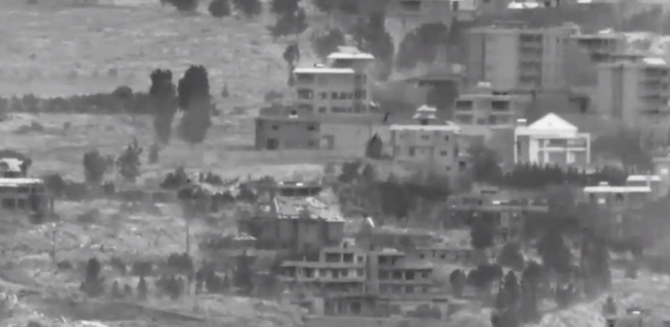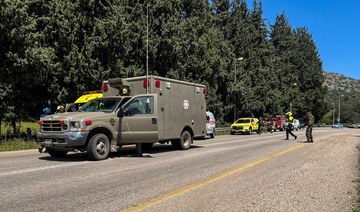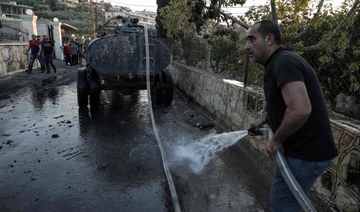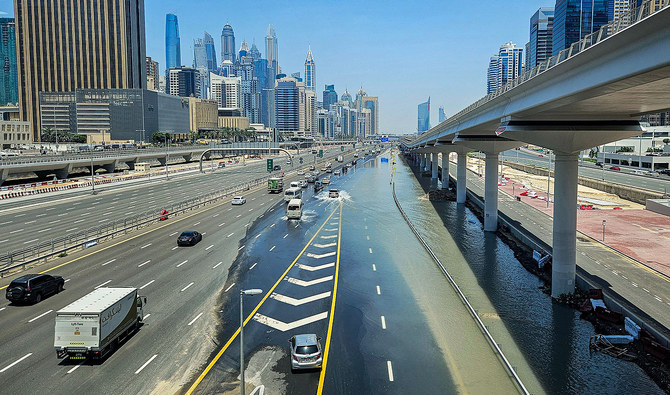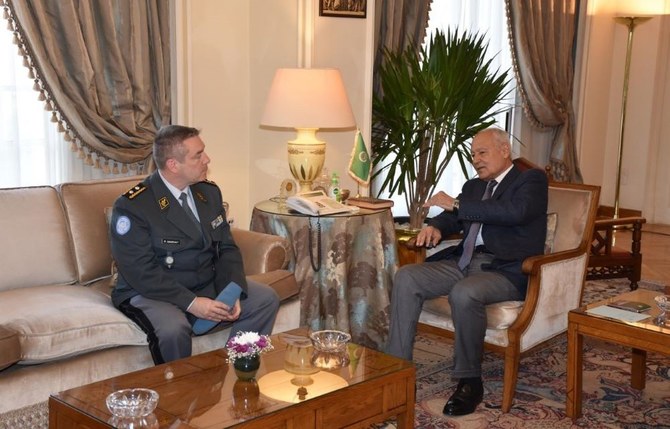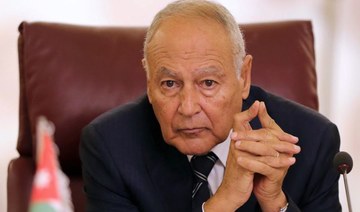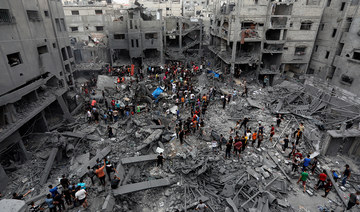KAFR BATNA: The shrill bell sends hundreds of students rushing toward their classrooms in a town near Damascus, which only months ago was the scene of fierce fighting between insurgents and regime forces. Their hometown of Kafr Batna, in Syria’s Eastern Ghouta, was recaptured by the regime just this spring after a blistering offensive against opposition factions that held the area for nearly five years. More than 4 million Syrian students are heading back to school this month in areas under regime control across the country, the Education Ministry says. In a modest classroom, Batoul Jardat chats with high school students enrolled in her Arabic language course. The instructor, 30, is herself a Kafr Batna native, but she fled five years ago for the relative safety of Damascus. She returned earlier this year, after the army announced that Ghouta and Damascus as a whole were finally “safe.”
Like her students, Jardat says she is still getting used to a new routine. “I feel strange, just like them,” says the young woman, dressed in a white headscarf, long overcoat and stripey blue-and-white T-shirt. “Everything is new — the students’ faces, the classroom seats, the repaired school walls,” she says. “Even the quiet is something new and unfamiliar for both me and them,” adds Jardat. Jardat tries to break the ice with her 30 students, who are seated on simple wooden chairs between bare walls. “I asked them what they did for the summer break, but they were surprised by the question and no one answered,” she recalls. Then “some said: ‘We counted the artillery shells; Others laughed sarcastically. Some said: ‘There’s nothing beautiful in life.’” Jardat says she expects none of her students have “lived a normal childhood or a stable life.”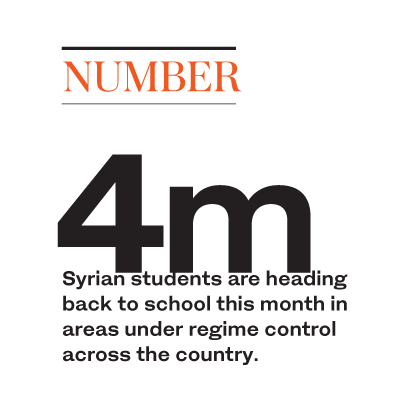
The school year ahead, she says, will be “a real challenge.” “There are tons of difficulties — we don’t know what kinds of curricula they were studying before, and most students are in a bad psychological state,” she says. Sitting behind a small table in a corridor between classrooms, Samar Al-Khateeb peers through her glasses at endless papers brought by parents to enrol their children. “We have 19 classrooms but we’re looking to open more as the number of pupils keeps increasing,” says the administrator in her 50s, a light yellow headscarf framing her face. “We’re registering around 70 new students a day.” Khateeb says she is delighted to see pupils return to the school from which she graduated years ago. “My roots are here, and these are my people,” she says. “This land has given me so much and it’s now time to give back.”
Eastern Ghouta has around 50 schools, deputy minister for education Abdelkarim Hammad says, but there are no official statistics on the number of pupils.
In Kafr Batna this week, six had reopened — though one of them was still undergoing repairs. Syria’s war has killed more than 350,000 people since it started in 2011 with a violent crackdown on anti-government protests. But it has also damaged the country’s infrastructure, including schools. The education ministry says the government has rehabilitated 5,000 schools since 2011, including 785 this year.
In Eastern Ghouta, residents lived under crippling government siege before a deadly regime blitz and surrender deals saw the last rebels bussed to the north of the country.
In the school yard, 17-year-old Abdelrahman kicks a football around with his classmates, after losing many others in the seven-year war. “We’ve all been dispersed. Some of us died, some left to northern Syria,” says the teenager, his black hair slicked back and a fresh shirt on for school. “Just a small number of my friends are still here with me to finish their education,” he says. In another part of town, Ammar Hajjo’s mother grinned as her 13-year-old returned home from school.
After years of worry every time her son slipped out the door to study, the mother in her 40s says she is finally breathing a sigh of relief.
“He was scared of going to school and I was petrified he would be blown up or hit by artillery fire,” she says. “In past years, he has learned nothing but violence and the vocabulary of war,” she says, but he could now take up computer science or foreign language classes.
“I hope he can now catch up on what he missed so that he can realize his dream of becoming an electrical engineer.”






